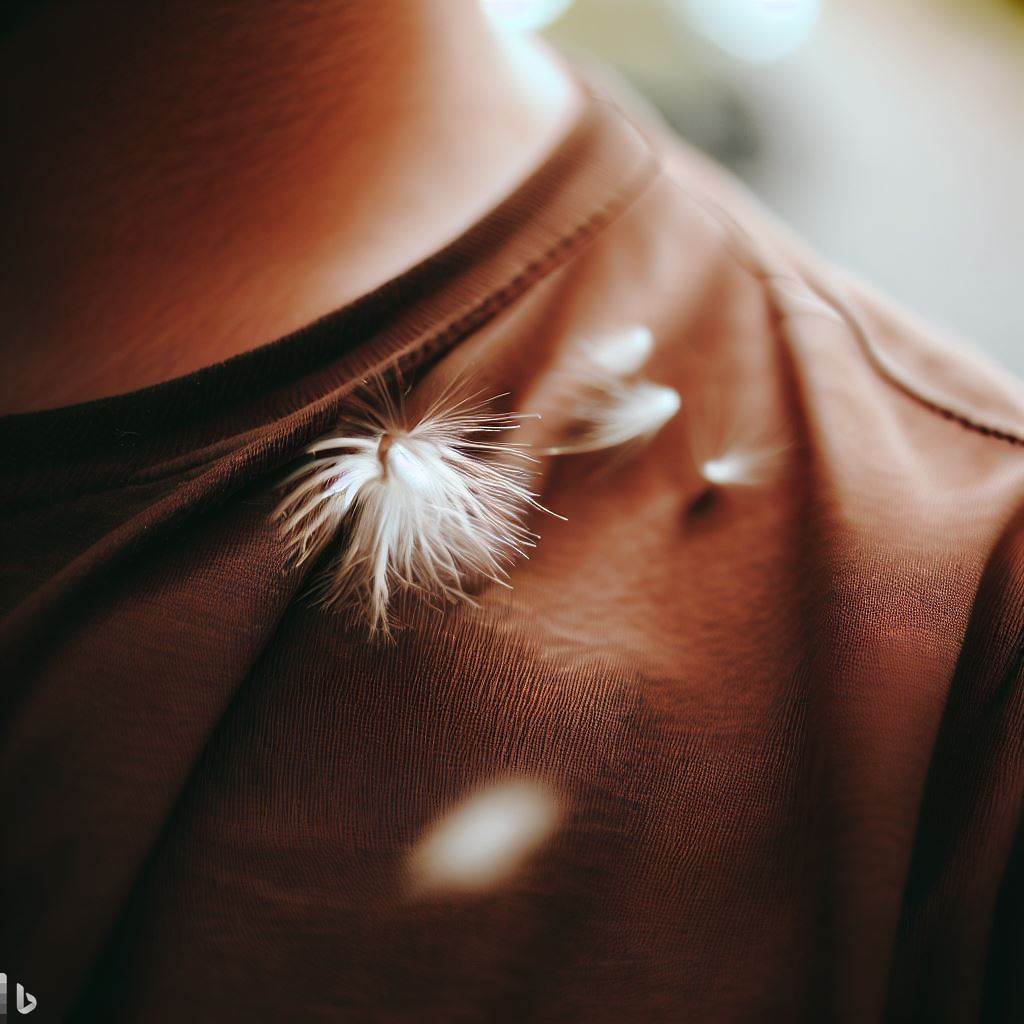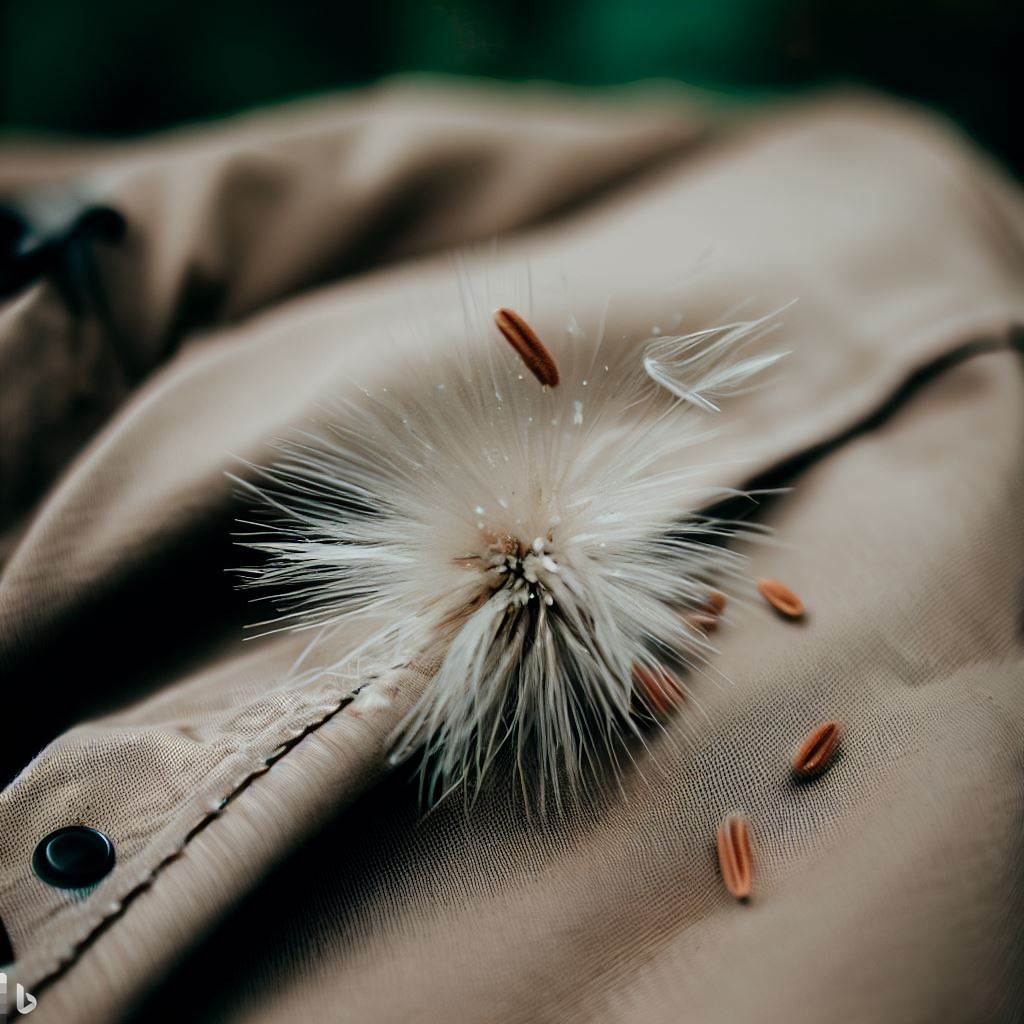Have you ever emerged from a wonderful walk in nature only to discover tiny, stubborn hitchhiker seeds that stick to your clothes? These little hitchhikers are nature’s ingenious way of spreading their species far and wide. They’re not just pests; they reveal the astounding creativity of Mother Nature.
Mankind has marveled at these tiny travelers for centuries. We’ve been irritated by them but also inspired – prompting innovations ranging from Velcro to camouflage gear!
In the forthcoming paragraphs awaits a rich tapestry interweaving science with whimsy as we delve deeper into these mystical ‘cling-ons’. Prepare yourself for an enchanting journey that will alter how you perceive those pesky seeds hitching a ride on your next woodland walk.

Types of Hitchhiker Seeds
Hitchhiker seeds come in various forms, each with its own unique way of clinging onto fabric. Some common types include:
- Burrs
- Spines
- Hooks
- Even sticky coatings on the seed itself.
These adaptations allow the seeds to easily attach themselves to passing animals or unsuspecting humans. Understanding these different types is crucial in knowing how to effectively remove them.
How Hitchhiker Seeds Adhere to Clothes
When it comes to hitchhiking onto clothes, hitchhiker seeds have some clever tricks up their sleeves…or rather, pods. The sticky or hooked structures on their surface easily catch onto fabric fibers as we brush past plants in outdoor environments.
Their ability to latch onto clothing ensures their survival by providing a means for long-distance transportation and dispersal.
Burrs
Burrs are perhaps the most notorious hitchhiker seeds when it comes to sticking stubbornly on clothes. They have tiny hooks that can grasp onto fabric tightly, making removal a challenging task.
Spines and Hooks
Certain plant species have evolved spines and hooks specifically designed for hitching rides on passersby. These structures work similarly by entangling themselves within clothing fibers upon contact.
Sticky Coatings Removal Techniques for Hitchhiker Seeds on Clothing
Inspect and Isolate Affected Areas
Before attempting removal, carefully inspect your clothes for hitchhiker seeds. Once located, it is essential to isolate the affected area to avoid spreading the seeds further.
Gently Brush or Flick
For larger hitchhikers like burrs or spines, using a soft brush or flicking them off with your fingers can help dislodge them. Be sure to work inwards from the edge of the seed attachment point to minimize damage to fabric fibers.
Freezing Method
If you’re dealing with particularly stubborn hitchhiker seeds that refuse to budge, try placing your garment in a plastic bag and then freeze it for a few hours. The extreme cold should cause the seeds’ structures to become brittle, making removal easier.
Hitchhiker Seed Adaptations for Survival
Seed Size and Shape
The size and shape of hitchhiker seeds are often optimized for attachment. Larger or elongated seeds have a greater surface area, increasing the chances of catching onto clothing fibers or animal fur as they pass by.
Hooks, Spines, or Barbs
The presence of hooks, spines, or barbs on hitchhiking seeds allows them to catch onto any available fabric or hair. These structures can be straight or curved depending on the plant species but always serve the same purpose – clinging tightly to passing carriers.
Sticky Coatings
Some seeds are equipped with sticky or mucilaginous coatings that adhere to surfaces, enabling them to stick to anything that brushes against them. These seeds may cling to the feet of animals or be carried by the wind until they encounter a suitable surface to attach to.
A well-known example of this adaptation is the seeds of the Impatiens plant (Impatiens spp.), which can be seen “exploding” and sticking to anything they touch.
Wing-like Structures
Certain seeds possess wing-like appendages that enable them to be easily carried by the wind. These structures, called “samara,” create a kind of gliding effect, allowing the seeds to cover considerable distances.
Trees like maples (Acer spp.) and ashes (Fraxinus spp.) use samaras as their hitchhiking strategy.
Explosive Mechanisms
A few plant species have seeds that use explosive mechanisms for dispersal. These seeds are housed in specialized capsules that, when dry, build up tension until they burst open suddenly, flinging the seeds in various directions.
The touch-me-not plant (Mimosa pudica) is known for its explosive seed pods.
Impact and Influence of Traveling Seeds in New Environments
The impact of hitchhiker seeds in new environments is profound and multifaceted. When these seeds successfully attach themselves to clothing or fur and are transported to distant locations, they contribute to plant dispersion and colonization, allowing species to expand their range.
This process aids in the establishment of new populations, genetic diversity, and ecosystem resilience.
For native species, hitchhiker seeds can also promote habitat restoration and regeneration. Animals carrying seeds may inadvertently drop them in areas that have been disturbed, aiding in the recovery of damaged ecosystems.
This natural seed dispersal mechanism has been instrumental in restoring various habitats, from grasslands to forests, and supporting biodiversity.

Inspiration for Human Innovations
Beyond their ecological significance, hitchhiker seeds have served as a source of inspiration for human innovations. Perhaps the most famous example is the invention of Velcro, which was inspired by the tiny hooks on burrs.
Swiss engineer George de Mestral noticed how burrs clung tenaciously to his dog’s fur during a walk, and he replicated the hook-and-loop mechanism in Velcro.
The study of hitchhiker seeds and their attachment mechanisms has also influenced the development of materials in various industries. Scientists and engineers have looked to nature for inspiration, leading to the creation of innovative materials with properties similar to those found in these clinging seeds.
This bio-inspired approach has led to advancements in adhesive technologies, medical adhesives, and even space exploration equipment.
Appreciating Nature’s Ingenious Designs
Understanding the ingenious strategies of hitchhiker seeds highlights the remarkable creativity of Mother Nature. These tiny hitchhikers have evolved over millennia, developing sophisticated mechanisms to ensure their survival and dispersion.
From sticky coatings to tiny hooks, these adaptations showcase the incredible adaptability and resourcefulness of plants in their pursuit of survival and propagation.
Conclusion
As we continue to explore and learn from nature’s wonders, it becomes evident that there is much we can gain from observing and understanding the world around us.
The study of hitchhiker seeds not only provides valuable insights into ecological processes but also reminds us of the intricate connections between living organisms and the environments they inhabit.
Next time you find yourself picking burrs off your clothing after a nature walk, take a moment to appreciate the remarkable journey these hitchhiker seeds have taken.
In them, we find a reminder of the vast and interconnected web of life that surrounds us, and the enduring influence nature has on human innovation and creativity.
FAQs On hitchhiker seeds that stick to your clothes
Q: What are hitchhiker seeds?
A: Hitchhiker seeds, also known as hitchhiking weeds, are weed seeds that have the ability to stick to clothing or fur and be carried to other locations.
Q: What are some common hitchhiker weeds?
A: Some common hitchhiker weeds include common burdock, krameria, sandbur weed, hedge parsley, and houndstongue.
Q: How do hitchhiker seeds stick to clothing?
A: Hitchhiker seeds have structures such as bristles or hooked hairs that easily stick to clothing and fur.
Q: Are hitchhicker weeds invasive?
A: Yes, some hitchhiker weeds are invasive. They have the ability to quickly spread and outcompete native plants.
Q: How can I remove hitchhiker seeds from my clothes?
A: You can remove hitchhiker seeds from your clothes by carefully picking them off or using a lint roller.
Q: How can I prevent hitchhiker weed seeds from sticking to my clothes?
A: To prevent hitchhiker weed seeds from sticking to your clothes, you can wear protective clothing or avoid areas with known hitchhiker weeds.
Q: What are the characteristics of houndstongue?
A: Houndstongue is a hitchhiker weed with large dark green leaves, hairy green stems, and clusters of pale green or white flowers.
Q: How many seeds does houndstongue produce?
A: Houndstongue typically produces three to four seeds per flower.
Q: How can I control the infestation of hitchhiker weeds?
A: You can control the infestation of hitchhiker weeds by uprooting them or using herbicides.
Q: Can hitchhiker weeds cause eye infections?
A: Yes, some hitchhiker weeds, such as houndstongue, can cause eye infections and skin irritation upon contact.